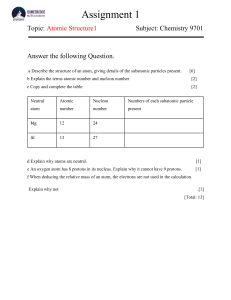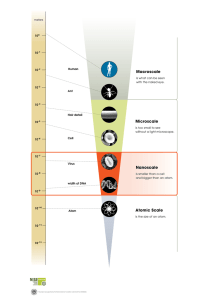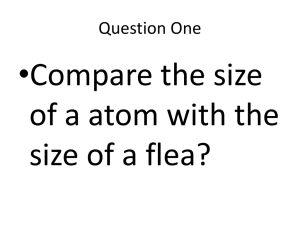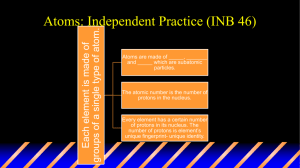Grade 10- CHEMISTRY Diagnostic Test
advertisement
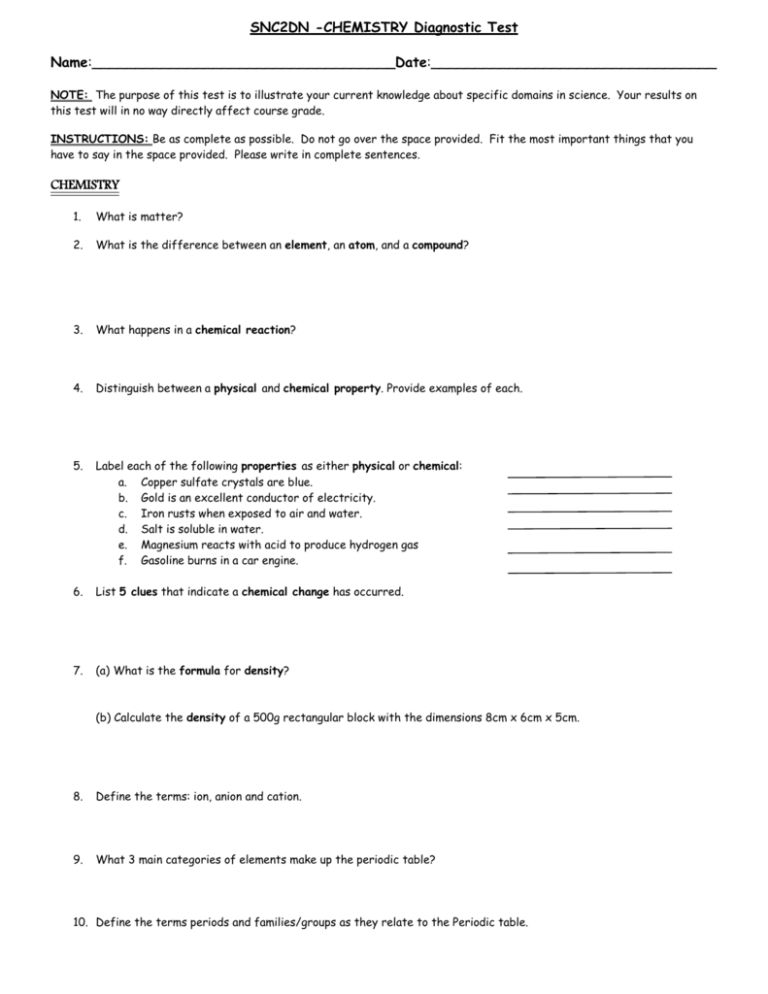
SNC2DN -CHEMISTRY Diagnostic Test Name:___________________________________Date:_________________________________ NOTE: The purpose of this test is to illustrate your current knowledge about specific domains in science. Your results on this test will in no way directly affect course grade. INSTRUCTIONS: Be as complete as possible. Do not go over the space provided. Fit the most important things that you have to say in the space provided. Please write in complete sentences. CHEMISTRY 1. What is matter? 2. What is the difference between an element, an atom, and a compound? 3. What happens in a chemical reaction? 4. Distinguish between a physical and chemical property. Provide examples of each. 5. Label each of the following properties as either physical or chemical: a. Copper sulfate crystals are blue. b. Gold is an excellent conductor of electricity. c. Iron rusts when exposed to air and water. d. Salt is soluble in water. e. Magnesium reacts with acid to produce hydrogen gas f. Gasoline burns in a car engine. 6. List 5 clues that indicate a chemical change has occurred. 7. (a) What is the formula for density? (b) Calculate the density of a 500g rectangular block with the dimensions 8cm x 6cm x 5cm. 8. Define the terms: ion, anion and cation. 9. What 3 main categories of elements make up the periodic table? 10. Define the terms periods and families/groups as they relate to the Periodic table. 11. Differentiate between homogeneous and heterogeneous mixtures. Provide examples of each. 12. Draw a Bohr Diagram for the element Aluminum. 13. Draw Bohr-Rutherford diagrams for Na, Cl-1 14. Complete the following chart: Name of Compound Chemical Formula sodium fluoride barium sulfide CaCl2 KI 15. Complete the following chart Element Element Atomic Number of Number of Mass Number of Standard name symbol number protons neutrons Number electrons atomic notation Argon 40 40 18Ar 11 Carbon 11 16. What is an isotope? 17. What could a person do to prevent corrosion? 18. Fill in the blanks in the following sentences: a) b) c) d) e) f) Protons are ___________ charged particles. The mass of a proton is approximately equal to the mass of a(n) ___________. The neutron is a __________ particle found in the ________ of an atom. In all neutral atoms, the number of __________ is equal to the number of __________. Most of the mass of an atom is contained in the ____________. The lightest particles in an atom are ____________. 5B

